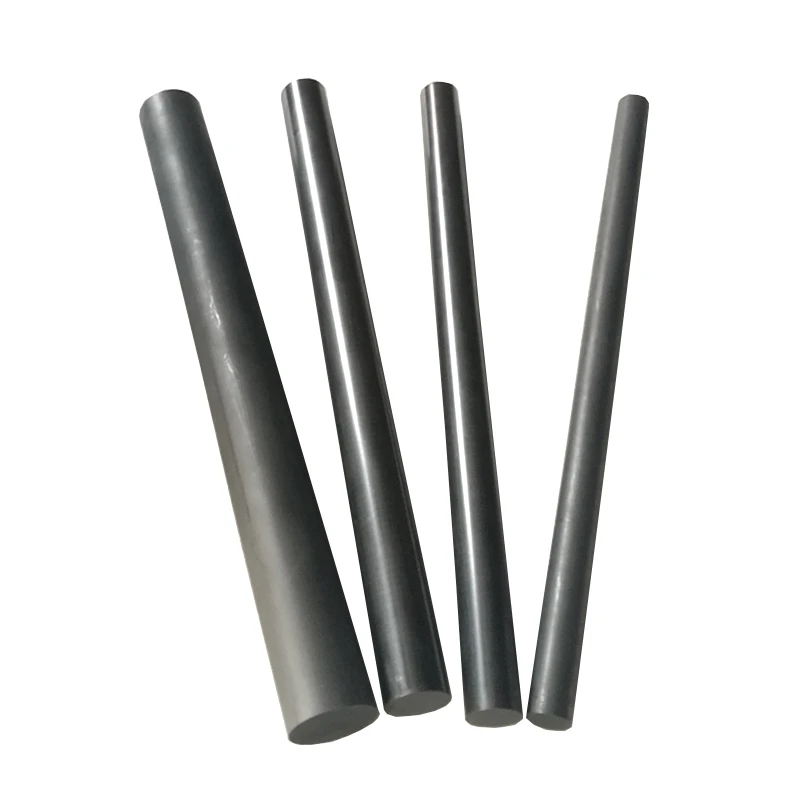Graphite is a remarkable material. It’s essential for countless industries, from steelmaking and foundries to aerospace and electrical discharge machining (EDM). As the owner of a factory with seven production lines specializing in graphite products, I, Allen, have spent years working with this unique material. I’ve shipped high-quality graphite to clients all over the world, including decisive business owners like Mark Thompson in the USA. And I can tell you one thing for sure: while graphite is incredibly useful, it can be a real headache to machine if you’re not prepared. Its properties make it unlike any metal or plastic you’ve worked with.
This article is for the procurement officers, engineers, and machinists who need to understand the intricacies of working with graphite. We will dive deep into the specific challenges and solutions associated with graphite machining. By the end, you will understand why certain tools and techniques are required, how to manage the infamous graphite dust, and how to achieve a perfect finish on your parts. This is the practical, first-hand knowledge that separates a frustrating experience from a successful and profitable one.
What Makes Graphite So Difficult to Machine?
At first glance, graphite seems easy to work with. It’s relatively soft and doesn’t require a lot of force to cut. However, this is deceptive. The biggest challenge lies in its conflicting material properties: graphite is both soft and brittle, yet also intensely abrasive. This paradox is what stumps many machinists. Because it’s a brittle material, it doesn’t form long, continuous chips like metal. Instead, it fractures into a fine powder, or dust. If you apply too much pressure or use the wrong tool, the workpiece can easily chip if not handled with extreme care.
The second part of the paradox is its abrasive nature. While you can cut it easily, the microscopic particles that make up the graphite are extremely hard. When you machine graphite, these particles act like sandpaper against the cutting edge of your tool, causing rapid tool wear. An ordinary steel tool will become dull in a matter of minutes. This means you must use specialized cutting tools and techniques to get any reasonable tool life and maintain the dimensional accuracy of the finished parts. Understanding this dual nature of soft-but-abrasive is the first step to mastering graphite machining.
Why is Graphite Dust a Major Machining Challenge?
If you ask any experienced machinist about working with graphite, the first thing they’ll mention is the dust. The fine dust generated during machining is not just a nuisance; it’s a major operational hazard. This isn’t like wood dust or metal shavings. Graphite dust is pervasive, getting into every nook and cranny of the machine tool. Because graphite is electrically conductive, this dust particles can short out electronics, damage control panels, and cause catastrophic failure in expensive CNC equipment.
Furthermore, this abrasive dust is incredibly damaging to the mechanical components of the machine. It works its way into ball screws, linear guides, and bearings, mixing with lubricants to form a grinding paste that accelerates wear and tear. This can quickly ruin a machine tool that isn’t specifically designed or modified for graphite machining. The health of the operator is also a concern, as inhaling the dust can be harmful. Therefore, managing and containing graphite dust isn’t just a best practice; it is an absolute necessity for safety and for protecting your equipment investment.
How Do You Choose the Right Cutting Tools for Graphite Machining?
Given graphite’s abrasive nature, your choice of cutting tools is critical. Using the wrong tool will result in poor surface finish, dimensional inaccuracies, and an incredibly short tool life. Standard high-speed steel (HSS) tools are completely unsuitable. Even uncoated carbide tools will wear out very quickly. For any serious graphite machining, you need to invest in superior tooling.
The industry standard is solid carbide tools with a specialized coating. Here’s a quick breakdown:
- Uncoated Carbide: Can be used for roughing or short runs, but the cutting edge will degrade rapidly. They need to be extremely sharp.
- PVD Coated Carbide: Coatings like Titanium Aluminum Nitride (TiAlN) offer some protection but are still not ideal for high-volume production.
- Diamond Coated Tools: This is the gold standard. A diamond coating provides a layer of extreme hardness that can withstand the abrasive attack of graphite particles. These tools cost more upfront but pay for themselves with significantly longer tool life and superior performance. When you need to machine graphite for critical applications like EDM electrodes, a diamond coated tool is the only reliable option.

What is the Best Machine Tool Setup for Working with Graphite?
You can’t just put a block of graphite on any old mill and expect good results. The ideal machine tool for graphite is a high-speed CNC machining center designed specifically for this purpose. These machines have several key features. Firstly, they are fully enclosed to contain the pervasive graphite dust. All sensitive components, like the controller, electronics, and ways, are sealed and protected.
Secondly, they are built for rigidity. Even though graphite is soft, maintaining tight tolerances requires a stable machine that can handle high speeds without vibration. A powerful, high-RPM spindle is essential for using the small diameter tools often required for detailed electrode work. A standard machine can be retrofitted for graphite work with enhanced sealing and a robust dust collection system, but a purpose-built machine will always deliver better results and have a longer operational life. Investing in the right machine is just as important as investing in the right cutting tools.
Are Special Speeds and Feeds Required to Machine Graphite?
Yes, absolutely. Finding the right speeds and feeds for graphite machining is a balancing act. The goal is to remove material efficiently without causing the brittle workpiece to chip or fracture. As a general rule, you should use very high speeds (high spindle RPM) combined with a moderate feed rate.
High RPM allows the cutter to get through the material quickly, minimizing the time the cutting edge is in contact with the abrasive graphite and thus reducing tool wear. A moderate feed rate ensures that you are not putting too much pressure on the material, which helps to avoid chipping, especially on corners or when creating thin ribs. Pushing the tool too fast will cause excessive tool deflection and lead to a poor surface finish and broken parts. Starting with the tool manufacturer’s recommendations and then adjusting based on the specific grades of graphite and the geometry of the part is the best approach. In our factory, we have developed detailed parameter charts for machining everything from large high-strength graphite blocks to intricate electrodes.
How Can You Effectively Manage Abrasive Tool Wear?
Tool wear is the biggest enemy of productivity and profitability in graphite machining. Because the material is so extremely abrasive, even the best carbide tools will eventually fail. The key to managing this is using the right coatings. As mentioned, diamond coatings are superior, but there are different types.
"In my experience, investing in high-quality tooling from the start saves a tremendous amount of money and time in the long run. A cheap tool is the most expensive mistake you can make when machining graphite." – Allen, Factory Owner
The best solution for maximizing tool life and tool performance is a CVD diamond coating. CVD stands for Chemical Vapor Deposition. In this process, the diamond is "grown" directly onto the carbide substrate, creating a very thick and durable coating layer. This thicker diamond layer is much more resistant to the abrasive nature of graphite than a PVD diamond coating (Physical Vapor Deposition), which is typically much thinner. A tool with a CVD diamond coating can offer a much longer tool life, often lasting 10 to 20 times longer than an uncoated carbide tool. While the initial cost is higher, the extended tool life and consistent performance lead to a lower cost-per-part, which is what matters in production.

What are the Best Solutions for Graphite Dust Ventilation and Collection?
Since graphite dust is the primary challenge, an effective ventilation and collection strategy is non-negotiable. You must capture the dust at its source before it has a chance to escape into the machine and the shop environment. A simple shop vac is not sufficient for this task; it will clog quickly and won’t capture the finest particles.
A professional dust collection setup is required. This typically involves a powerful vacuum system connected directly to a dust shoe or shroud around the spindle and cutter. This setup creates a high-velocity air stream that sucks the dust away the moment it is created. The air is then passed through a multi-stage filtration system, often including HEPA filters, to trap even the smallest particles. This not only keeps the machine tool clean but also protects the operator’s health and prevents contamination of other projects in the workshop. The goal is simple: remove the dust immediately and completely.
Should You Machine Graphite Wet or Dry?
The debate over wet versus dry graphite machining is a common one. For the vast majority of applications, machining graphite dry is the preferred method. This is because adding a liquid coolant turns the fine graphite dust into a thick, abrasive sludge or slurry. This sludge is incredibly difficult to clean, sticks to everything, and can be even more damaging to machine components than dry dust. It clogs coolant lines and requires specialized filtration systems to manage.
However, there are a few specific situations where wet machining is used. In electrical discharge machining (EDM), the electrode is submerged in a dielectric fluid. Sometimes, a very fine mist of coolant or compressed air can be used to flush chips from deep pockets or holes. But generally, the strategy is to manage the dust, not turn it into a slurry. If you have an excellent dust collection system, there is very little reason to introduce a liquid lubricant or coolant into the machining process.
How Do You Securely Clamp a Brittle Graphite Workpiece?
Holding a brittle material like graphite securely for machining presents its own set of challenges. If you clamp it too tightly in a standard vise, you risk cracking or shattering the entire workpiece. If you don’t clamp it tightly enough, it can shift or vibrate during machining, ruining the part. The key is to distribute the clamping force evenly over a large surface area.
Instead of using the hardened steel jaws of a vise, it’s better to use soft jaws or custom fixtures made from aluminum or plastic. Bonding the graphite block to a fixture plate with a special adhesive or low-melt-temperature alloy is another excellent method for holding delicate or complex parts. For thin plates, a vacuum chuck can be an ideal solution. The goal is to hold the part with enough force to ensure rigidity but without creating stress points that could cause problems or lead to fractures. Careful fixturing is essential to avoid chipping and ensure the final part meets specifications.
What Are Some Advanced Tips for Machining Complex Graphite Features?
Machining complex geometries in graphite, such as the detailed EDM electrodes used in mold making, requires an extra level of care and precision. These parts often feature very thin ribs, sharp internal corners, and require a flawless surface finish. The electrode machining process is a true test of a machinist’s skill. When creating these intricate parts, it’s crucial to use sharp tools with the correct geometry. A tool with a high helix angle can help evacuate dust more effectively from deep cuts.
For thin walls and ribs, it’s best to use a "trochoidal" milling path rather than a simple slotting path. This approach takes smaller, arcing cuts, which reduces the pressure on the workpiece and the tool, minimizing the risk of breakage. Always machine from the inside out when creating pockets, and use a final, very light finishing pass with a fresh, sharp tool to achieve the best possible surface finish. This attention to detail is what distinguishes standard parts from the high-precision conductive graphite rods and electrodes demanded by the aerospace and tool-and-die industries. It’s this level of expertise that we pride ourselves on at our graphite products factory.

Key Takeaways
Graphite machining is a specialized skill, but it is entirely manageable with the right knowledge, tools, and processes. By understanding its unique properties, you can overcome its challenges and produce high-quality parts efficiently. Here are the most important things to remember:
- Acknowledge the Paradox: Graphite is both soft and extremely abrasive. This dual nature dictates every choice you make, from tooling to speeds and feeds.
- Dust is the Enemy: You must have a robust, industrial-grade dust collection and ventilation system to protect your machine tool, your electronics, and your health.
- Invest in Diamond Tooling: For any serious production, diamond coated tools (specifically CVD diamond) are a must. They provide the tool life and performance necessary for profitable machining.
- Use the Right Machine: A high-speed, rigid, and fully enclosed CNC machine is the ideal platform for working with graphite.
- Machine Dry: Avoid liquid coolants whenever possible. Dry machining with excellent dust extraction is the cleanest and most efficient method.
- Clamp with Care: Use techniques that distribute clamping force evenly to prevent the brittle graphite workpiece from cracking or chipping.
Post time: 09-15-2025


